PGOLID has been treating Curly-leaf pondweed (CLP) in the Pelican Group of Lakes for the past 15 years. Originally this program treated up to 100 acres of CLP annually. Prior to that large stands of CLP were found in several parts of the lakes. Curly leaf has a unique life cycle it grows under the ice in winter and flowers early in the year. It then dies off around July 4th and often uproots, floating around until it lodges on the shoreline.
The CLP treatment has been very successful in reducing the amount of CLP in the Pelican Group of Lakes. The treatment process usually starts with a plant survey in early May to detect the locations of the CLP for treatment that year. At this time of year the CLP often stands well above any native aquatics. Sampling includes dragging a weighted sampler across the lake bottom. In 2017 and 2018 only around 30 acres of CLP was treated each year and it was not found growing in several areas where it had previously been found. Treatment needs to occur before the water is 60 degrees, so it usually occurs in late May. In the past two years almost no CLP has been found in the Pelican Group of Lakes.
In 2019 and 2020 almost no CLP was found in the annual spring invasive plant delineation survey. In 2020 only one site out of the 311 sampled had any CLP, diverse native aquatic plants were found at most points sampled. No large dense stands of CLP suitable for aquatic herbicide treatment were found and the MN DNR permit to treat was withdrawn. The lake was treated in 2023. In 2024, a survey indicated very little CLP, so treatment was not completed. See the report below.
2024 Curly-leaf pondweed Report
MN DNR Curly Leaf Pondweed
MN DNR Aquatic Moss

